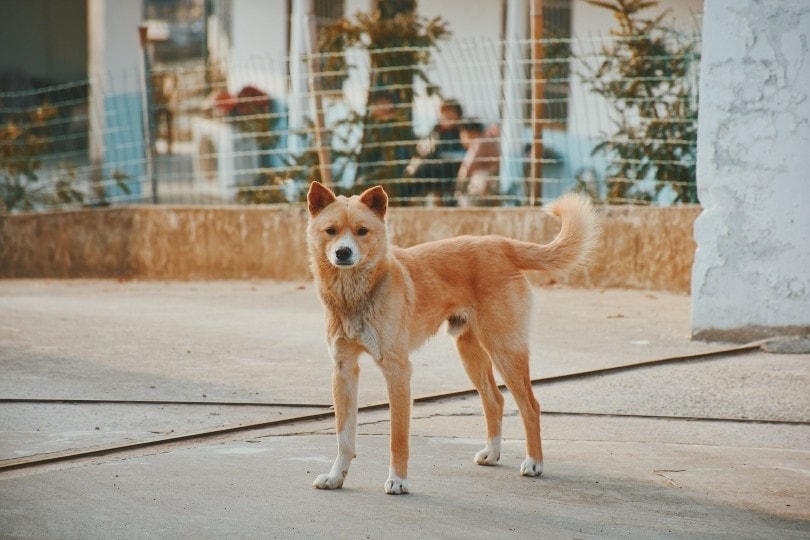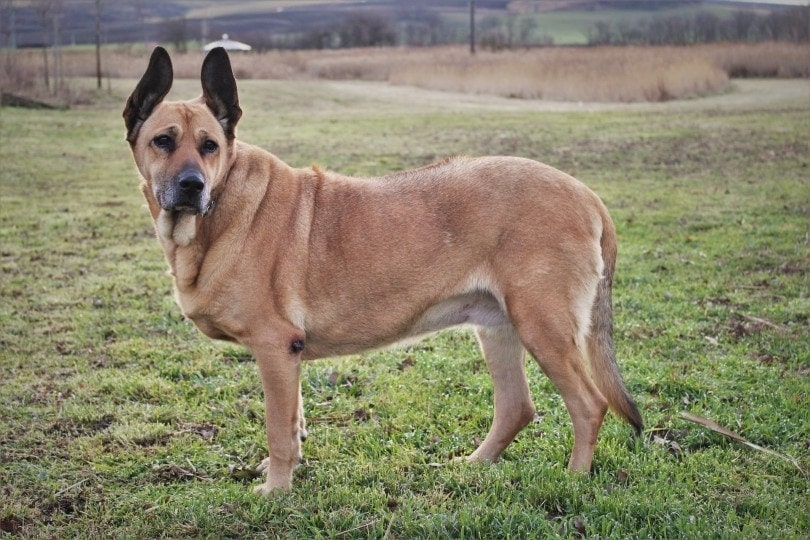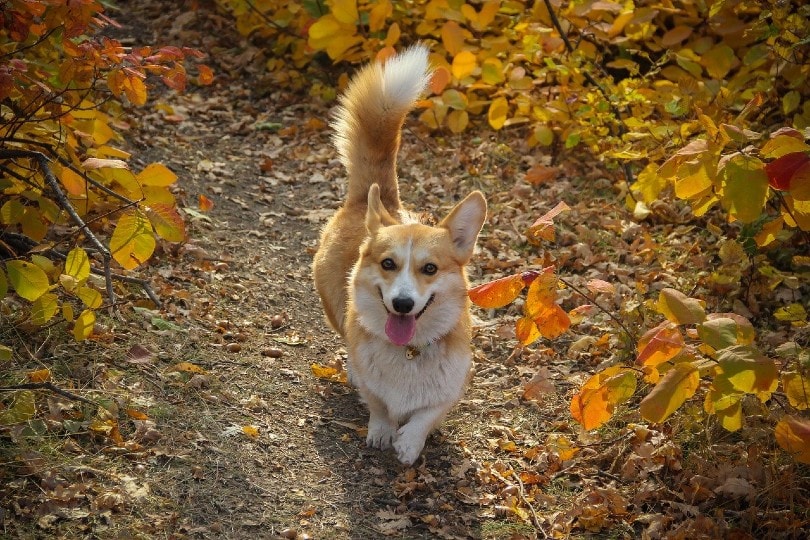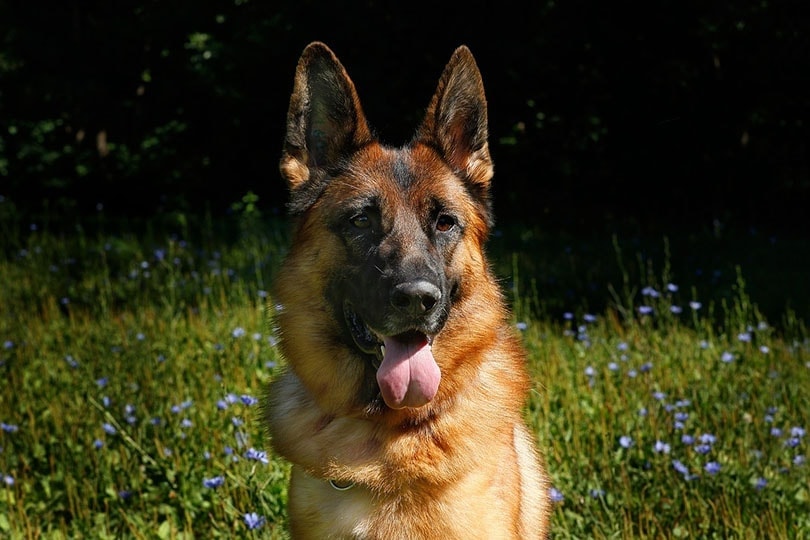Dogs are humans’ best friends, and there’s no limit to the ways that they can brighten our days. Unfortunately, though, with the partial exception of Scooby-Doo, dogs can’t talk.
What they can do is communicate using their tails. In addition to helping your pup maintain balance, your dog’s tail is one of their main ways of conveying information to the outside world.
You can learn so much about your dog by watching their tail — if you know what to look for, of course. Below, we’ll reveal what common tail signals mean so you can finally understand what your dog’s been trying to tell you all this time.
A Quick Note About Tail Communication
There are two ways in which your dog will use their tail to communicate, and these are placement and movement.
Your dog won’t always keep their tail in the same position, and where the tail is located on their body will give you information about their mood. Likewise, the way in which they move their tails is also extremely expressive.
You’ll have to consider both of these factors when trying to decipher canine communication. Also, remember that all dogs are individuals, so try to figure out what your specific dog is saying with certain tail placement and movement.

Different Tail Placements and Their Meaning
Dogs typically hold their tails in three different ways: up, down, and horizontal to the ground. Here’s what those placements mean.
Up

If your dog has their tail held straight up in the air, it means they’re on alert. It can also be a sign of confidence or dominance, so be careful if you see it around another dog.
A dog with an upright tail isn’t always friendly, and they may be trying to intimidate you, so proceed with caution.
Down
This is one of the best-understood tail postures. A lowered or tucked tail often indicates fear or submissiveness. A dog with a downward-pointing tail is frightened and may be likely to bolt if you make any sudden movements — but they may also lash out if they feel threatened, so be careful.
Horizontal to the Ground
This is basically your dog’s “resting” position for their tail. It means they’re neutral and may be curious about their surroundings. You won’t get much information from a horizontal tail, so you’ll have to rely on movement to get a better gauge of your dog’s mood.
Different Tail Movements and Their Meaning
The placement of your dog’s tail is only half the story — the other half comes from how they move it. This largely comes down to judging the speed and enthusiasm of their wag (or lack thereof).
Full Body Wag
If your dog’s tail is moving from side to side as far as it can in either direction, that’s a sign that your dog is happy and content. However, pay attention to the speed at which it moves — if it sweeps in long, languid strokes, that’s a good sign.
That’s not to say that fast strokes are bad; it’s just that they’re not always good. Rapid tail movement is a sign that your dog is excited, but that excitement could be due to seeing you come home from work or it could be a warning to stay back, much like a rattlesnake.
You’ll have to use context clues to determine which signal is being sent by your dog at the time.
Slow Wag
Your dog will wag their tail slowly and hesitantly if they’re nervous. You’ll likely see this in unfamiliar environments and situations; it’s your dog’s way of reserving judgment about things that might make them uncomfortable.
Submissive dogs will definitely give slow wags, and these are often paired with tail tucks and rolling over on their belly.
Wagging to One Side
We don’t have a definitive answer as to what this movement means, but there is some evidence that wagging to the right side of the dog’s body indicates relaxed confidence, whereas wagging to the left is a sign of stress.
This is far from settled science, though, so you should watch your dog’s behavior and form your own conclusions about what their asymmetrical wagging means.
No Movement Whatsoever
If your dog is holding their tail completely stiff and motionless, it means they’re on high alert. You’ve likely seen your dog hold their tail stiffly when they’re trying to decide if they’ve heard an intruder or if that dastardly mailman has returned despite previous warnings.
You likely have nothing to worry about if you see your dog with a stiff, motionless tail, but if you see a strange dog doing the same, you should be careful. They’re trying to decide if you’re a threat or not, and if they come to the conclusion that you’re dangerous, they could attack you. Watch out for other cues, like raised fur, pinned ears, and narrowed eyes.
You should understand that “motionless” is a relative term here. While many dogs will hold their tails completely still, others will only hold them mostly still while flickering the very tip. Anything less than a wide-ranging sweep counts as motionless, for the most part.
Combining Position and Movement
To really understand what your dog’s thinking, you’ll need to combine some of these cues. This is where context will play a huge role in deciphering their body language, because signs that could mean playfulness in one dog could be the precursor to violence in another.
For example, a tail that’s held horizontally to the ground while wagging in broad strokes is a reliable indicator that the dog is happy. On the other hand, a motionless or flickering tail that’s sticking straight up in the air should be treated with respect and caution.

Lucie Hošová, Unsplash
A Brief Word of Warning About Tail-Watching
While tail posture can tell us much about a dog’s emotional state, you shouldn’t rely on it exclusively. Some dogs send mixed signals, while others behave the opposite of what you’d expect. Tail posture is just one clue to be considered among many; you should also look for other body language indicators.
Remember that tails can give false-positive results as well. Your dog might be holding their tail beneath their body because they’re scared, but they may also be doing so because it’s comfortable. Likewise, older dogs might hold their tail stiff and motionless because they’re suffering from arthritis and it hurts to wag, not because they’re alert or aggressive.
Not all breeds use their tails in the same way either. Huskies are known for wagging their tails more slowly than other dogs, so that should factor into your evaluation. If you come across a Rottweiler, though, there might not be much tail to work with!
Again, tail position and movement are just pieces of a larger puzzle. Don’t give them more weight than they deserve.
What Is Your Dog’s Tail Telling You?
Watching your dog’s tail for information about how they’re feeling is a fun way to bond with your dog, but it will only take you so far. In most cases, you’ll be able to understand your dog’s mood perfectly without even looking at their tails, and this ability will only get stronger as you deepen the bond between you.
That said, being able to decipher tail tells is extremely valuable when dealing with unfamiliar dogs. While these tells aren’t 100% reliable, you should take them at face value until you understand the dog better.
Want to communicate better with your dog? Check out some of our other posts:
- 11 Types of Dog Barks: What Do They Mean?
- Dog Ear Language: What Your Dog’s Ears Can Tell You
- 12 Sounds Your Dog Makes and What They Mean
Featured Image Credit: Elena Rogulina, Pixabay









